The Best Marketing Channels for Driving Revenue Through Local Partners
THE 2024 STATE OF LOCAL MARKETING SERIES
THE 2024 STATE OF LOCAL MARKETING SERIES


Your company grows when you enable your partners to drive results.
But to drive results, affiliates need to utilize the right tactics.
Choosing the best marketing channels isn’t always easy. Affiliates often don’t know where to turn — they have many options in front of them with little insight into the efficacy of these tactics. As a result, ineffective channels get budget allocation while impactful ones go underutilized.
There are countless directions your partners could run with their marketing campaigns, but many of them lead to dead ends. That’s why you need to give them the map to marketing success to keep them on track.
We crunched the numbers to determine the most effective marketing channels and highlight how you (and your partners) can implement them into your local marketing programs.


The State of Local Marketing is a series of reports published yearly that distill thousands of data points into actionable insights that brands and local businesses can implement into their marketing strategies. By gaining insight into affiliates’ marketing decisions and how they affect revenue, the data unveils valuable truths about how marketers can optimize their channel strategies. This year, we evaluated 1,147 affiliates and analyzed 211,347 data points.
What is the State of Local Marketing?
01
Purchased leads
They say you shouldn’t take shortcuts.
But purchasing leads might be one of those rare exceptions. Let’s think of it as a cheat code.
The data reveals that affiliates who experience the highest revenue growth use purchased leads in their local marketing strategies.
The top 5 channels that boost partner revenue
Of local partners who experience 10% or more revenue growth, 71% rely on purchased leads.
When we look at the affiliates who only grew their revenue by 1% (or less), this number is only 57%.
The most successful local affiliates use purchased leads — which means this marketing channel drives results.
When affiliates purchase leads, they increase their number of prospects much faster than with other, more long-term marketing channels. This tactic is all about identifying who is in market and ready to buy now. That means a higher potential for conversions.
Knowing that purchased leads have the potential to be a major revenue driver for your affiliates, adding this tactic to your local marketing program is a no-brainer. Consider assigning a higher reimbursement rate to this channel to incentivize your partners to use it.
However, it’s important to note that the hard part comes after generating leads. No lead is guaranteed to become a paying customer — your affiliates have to work to nurture these leads. That’s why it’s vital that your partners develop a strong lead-nurturing strategy to convert these prospects into customers. Consider providing resources or training on effective lead-nurturing processes to ensure your affiliates follow through with these prospects.

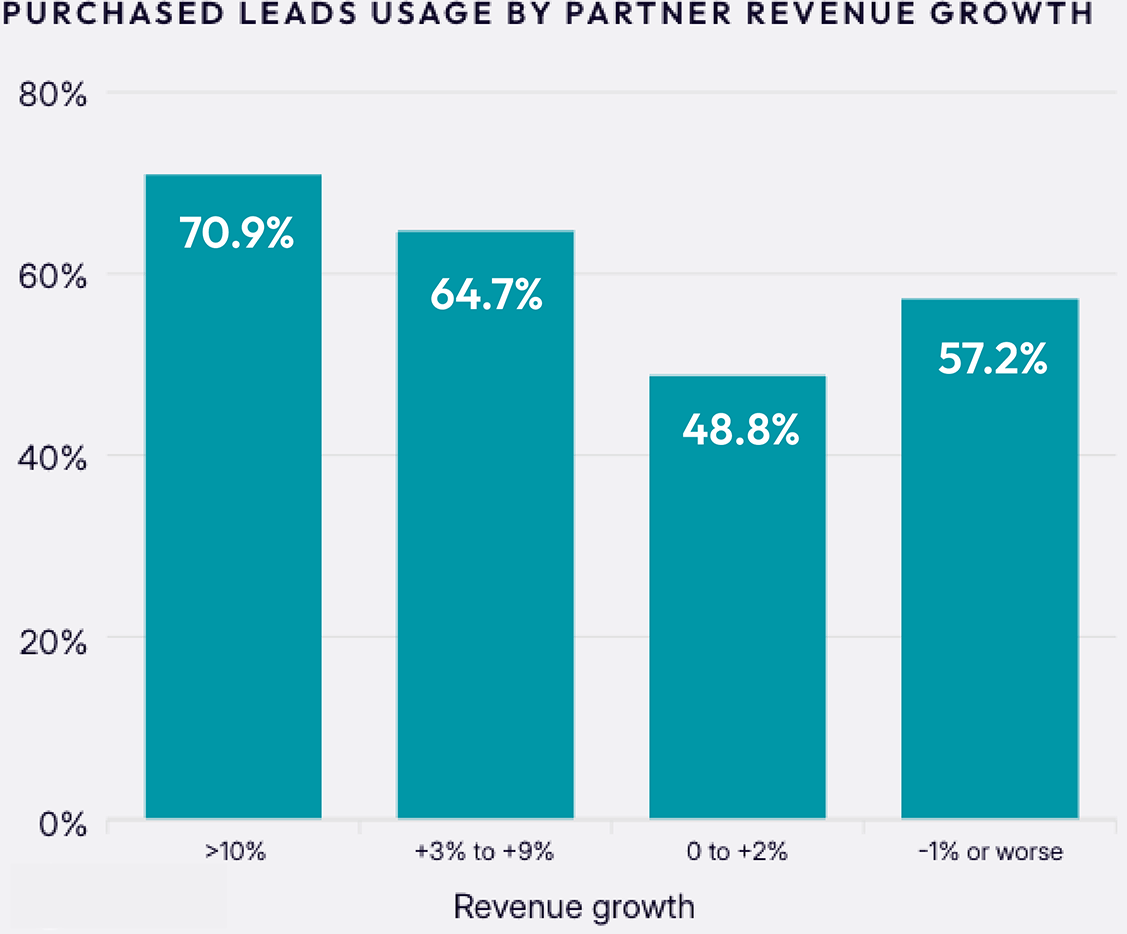
02
Referral programs
Think about the products and services you’re loyal to.
Your go-to restaurant. Your favorite hair product. Your electronics brand of choice.
Chances are, many of these brands were recommended to you by a friend or family member.
That’s why referral programs are such a powerful revenue generator.
In fact, affiliates across all stages of revenue growth recognize the effectiveness of this marketing channel — but it's used most by affiliates who achieve the highest revenue growth at 69%.
Consumers tend to trust people they know more than they trust brands. That’s why when a customer refers someone to a brand’s products or services, that person becomes more likely to buy. Referral programs are an excellent way to increase trust and sales by encouraging your best customers to convert others.
When you add this marketing channel to your program, consider gamifying your referral programs to make customers even more willing to offer their endorsement.


03
Direct mail
There was a time when mailboxes were overflowing with envelopes.
Now, all that congestion goes straight to your email inbox rather than your physical one.
That’s why direct mail has shifted from a less-than-effective way to reach people to a means of cutting through the digital noise.
The majority (67%) of affiliates who experience 10%+ revenue growth use direct mail.
This tactic enables affiliates to send out eye-catching flyers, brochures, and postcards that stand out in today’s highly digitalized world.
To ensure all direct mail assets adhere to your brand guidelines, provide your partners with pre-approved assets and templates they can customize while complying with your branding standards. This ensures that no noncompliant marketing makes its way to consumers’ doors.
Want a solution that simplifies asset creation while ensuring compliance?

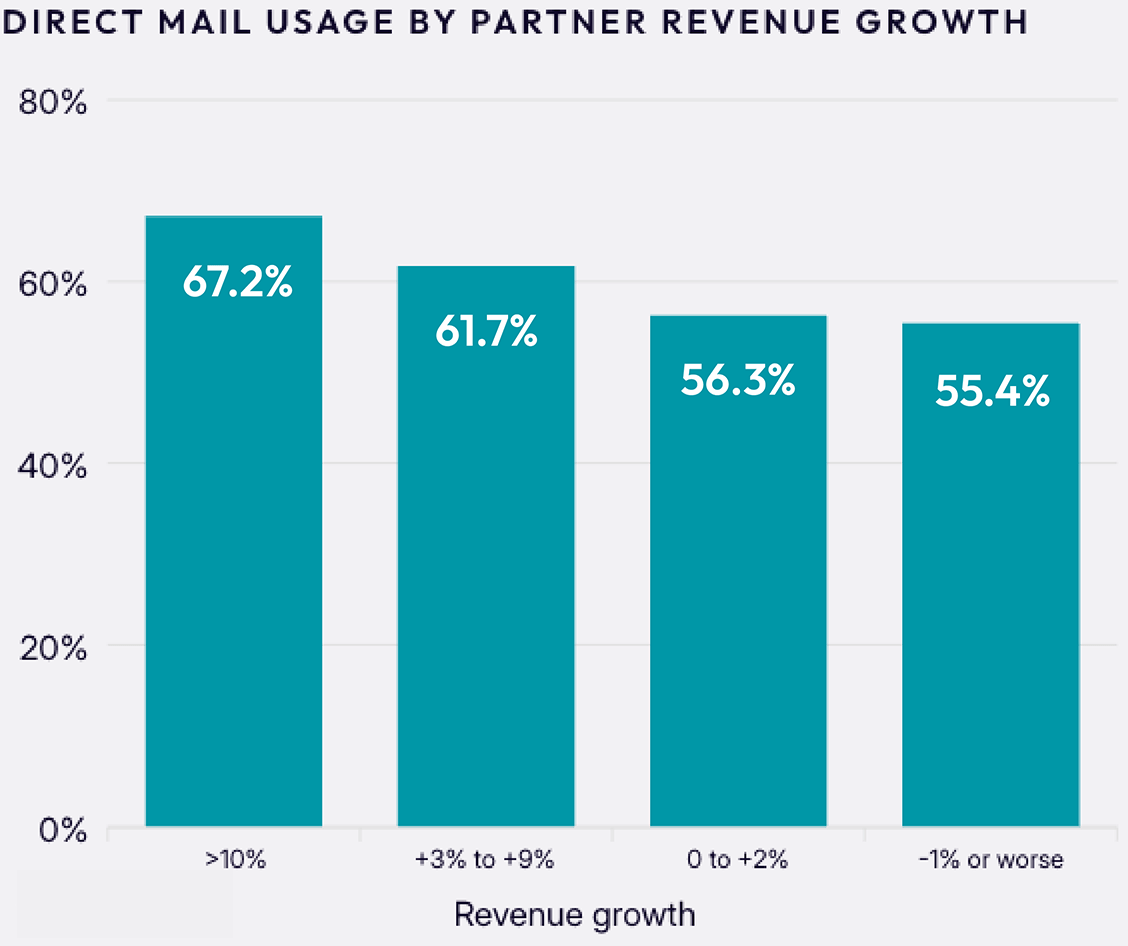
04
Leverage paid media tactics
Your affiliates’ reputations impact your brand.
Because if one of your local partners’ businesses gets a bad rap, customers will steer clear, products will sit on shelves, and your brand will be impacted as a whole.
So, how do you ensure your partners’ rep stays squeaky clean?
(Hint: Some of your affiliates are already doing it.)
Affiliates that see 3%-9% revenue growth use reputation management the most at 57%, while only 46% of the highest-achieving partners use this tactic. That means there’s an opportunity for your best affiliates to better manage their reputations (and, by extension, boost sales).
There are more aspects to online reputation management than your partners may realize. That’s why you need to ensure they cover all their bases, including:
- Responding to positive and negative reviews
- Posting regularly on social media
- Interacting with social media followers
- Creating SEO-optimized content
- Reviewing brand mentions
- Investing in reputation management services

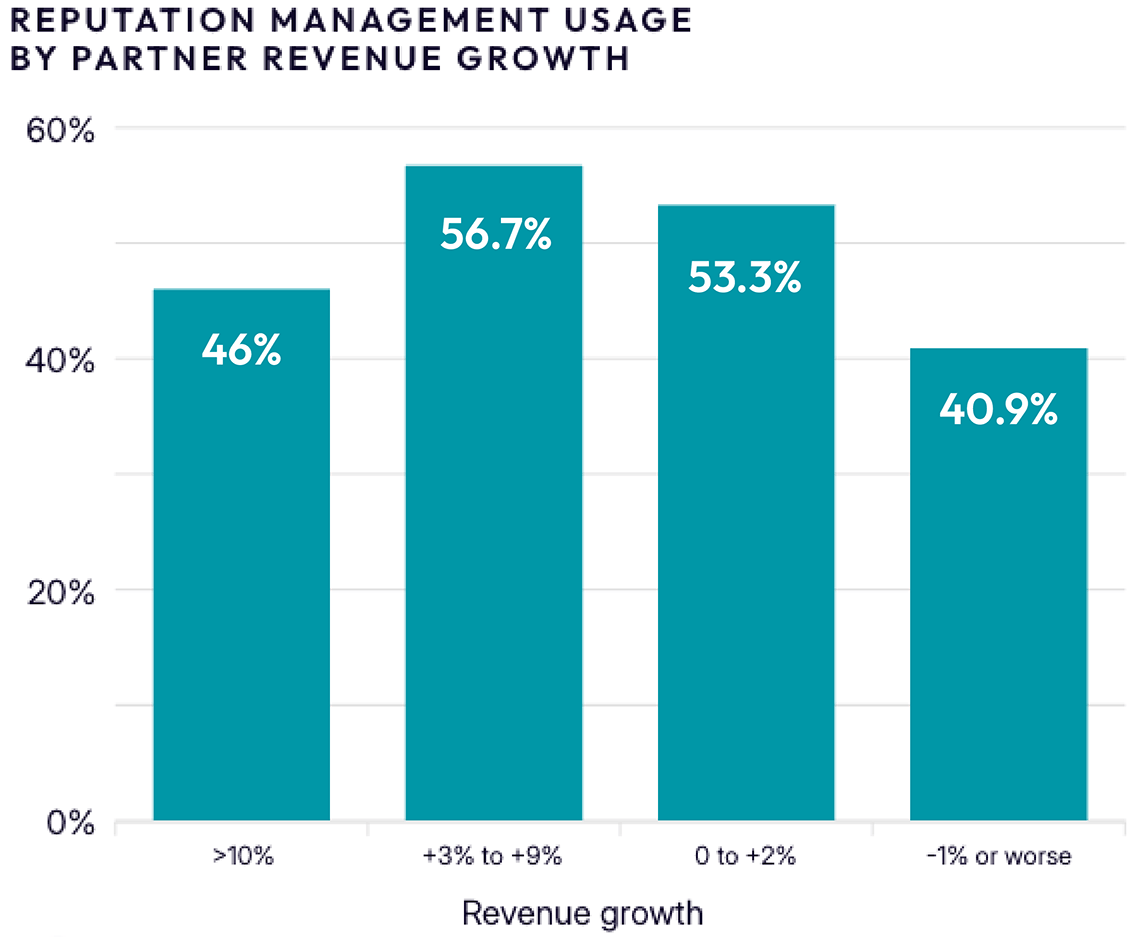
05
Paid search
If you’ve seen digital ads when searching the web (and we’re willing to bet you have), then so has your target audience.
That’s why your highest-performing partners are already leveraging this marketing channel.
Of affiliates who see 10%+ revenue growth, 46% of them use paid search.
But when we look at affiliates who achieve less than 1% growth, only 34% use this channel. That means most of your partners have major potential to grow their revenue through paid search.
Paid search tactics are excellent for boosting site traffic fast while providing highly measurable results. Plus, these ads are served to consumers who are actively searching for relevant keywords, meaning they have high purchase intent. And with location-based strategies like geotargeting, your partners can serve geographically relevant ads to reach consumers within their specific communities.
When adding paid search to your local marketing program, ensure your affiliates track ad performance to determine what’s working and what’s not so they can make changes accordingly.

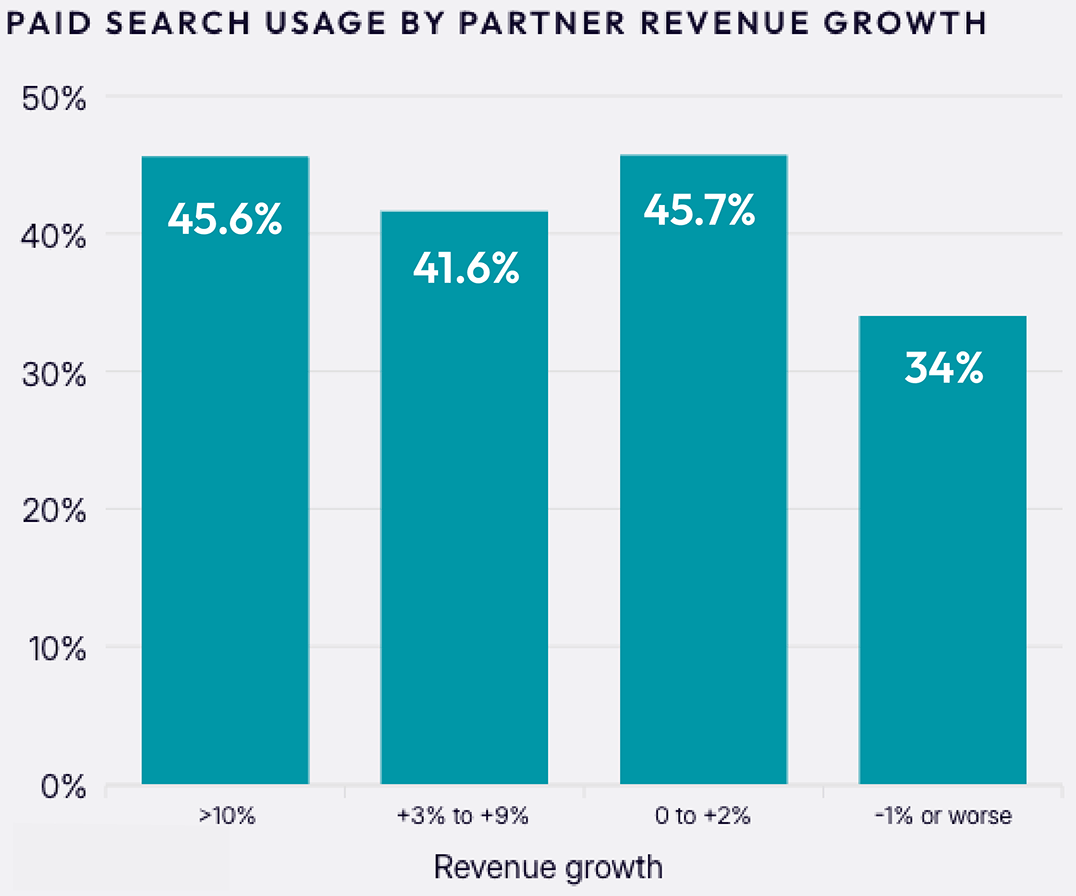
Only 44% of affiliates who see 10%+ revenue growth use organic social, as opposed to 48% of affiliates who see less than 1% growth.
Your most successful affiliates might be onto something...
Though the expectation is for local businesses to be on social media, this marketing channel requires a lot of work and produces relatively minimal results. That’s not to say that organic social can’t make an impact — it’s just a little trickier to get right.
So, you can and should still add organic social to your channel marketing program — as long as you pair it with its counterpart, paid social.
Of affiliates who experience over 10% revenue growth, only 33% of them use paid social. This number is much higher for affiliates who drive between 0% and 2% revenue growth at 43%.
So, why aren’t higher-performing affiliates using paid social? And should they be?
The boom and hype of social media in its first decade perhaps oversold its importance to some degree: while it’s still an important piece of the marketing puzzle, it’s not the only key to success. Marketers have realized they need a balanced plan with tactics spread throughout the funnel in order to drive purchases.
Affiliates also have a tendency to eliminate mid-funnel tactics like social media in favor of lead-driving tactics. And while rising advertising costs have driven ROI-seeking companies to other platforms, there is still value in paid social.
So, if you’re considering adding paid social to your marketing program, the answer is yes. Paid social generates better results than organic social because of its highly targeted approach and measurability. To achieve the best marketing outcomes, affiliates should use a combination of paid and organic social.
So, while you should incentivize both tactics in your marketing program, you should offer a higher reimbursement for paid.
We know what you’re thinking: Isn’t social media, like, really important? Shouldn’t all businesses be on social media?
The answer is a little more nuanced than you’d think.
Although organic social is widely used across the board, fewer high-performing partners use it than affiliates in the lower stages of revenue growth.
In a surprising turn of events, more affiliates in the lower stages of revenue growth use paid social than those in the highest stage.
What about social media?
Organic social
Paid social

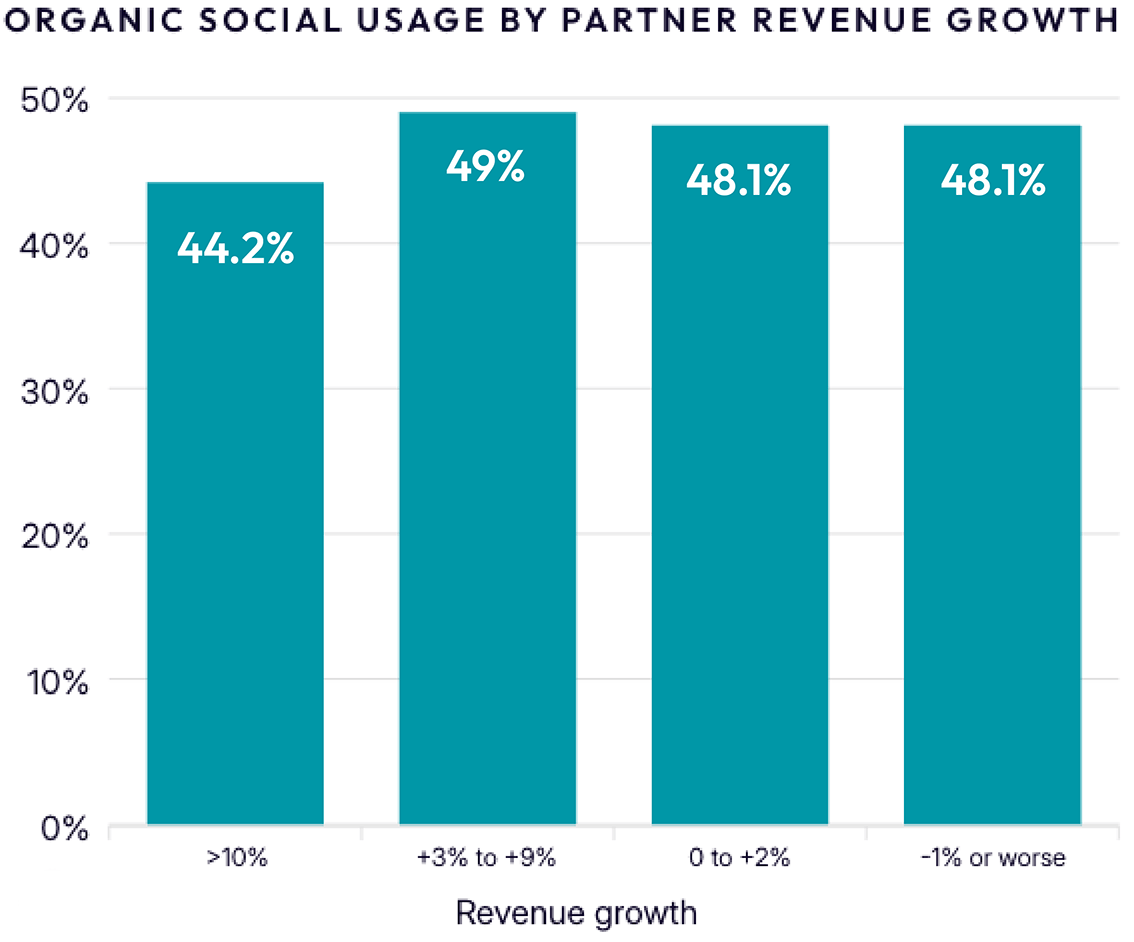
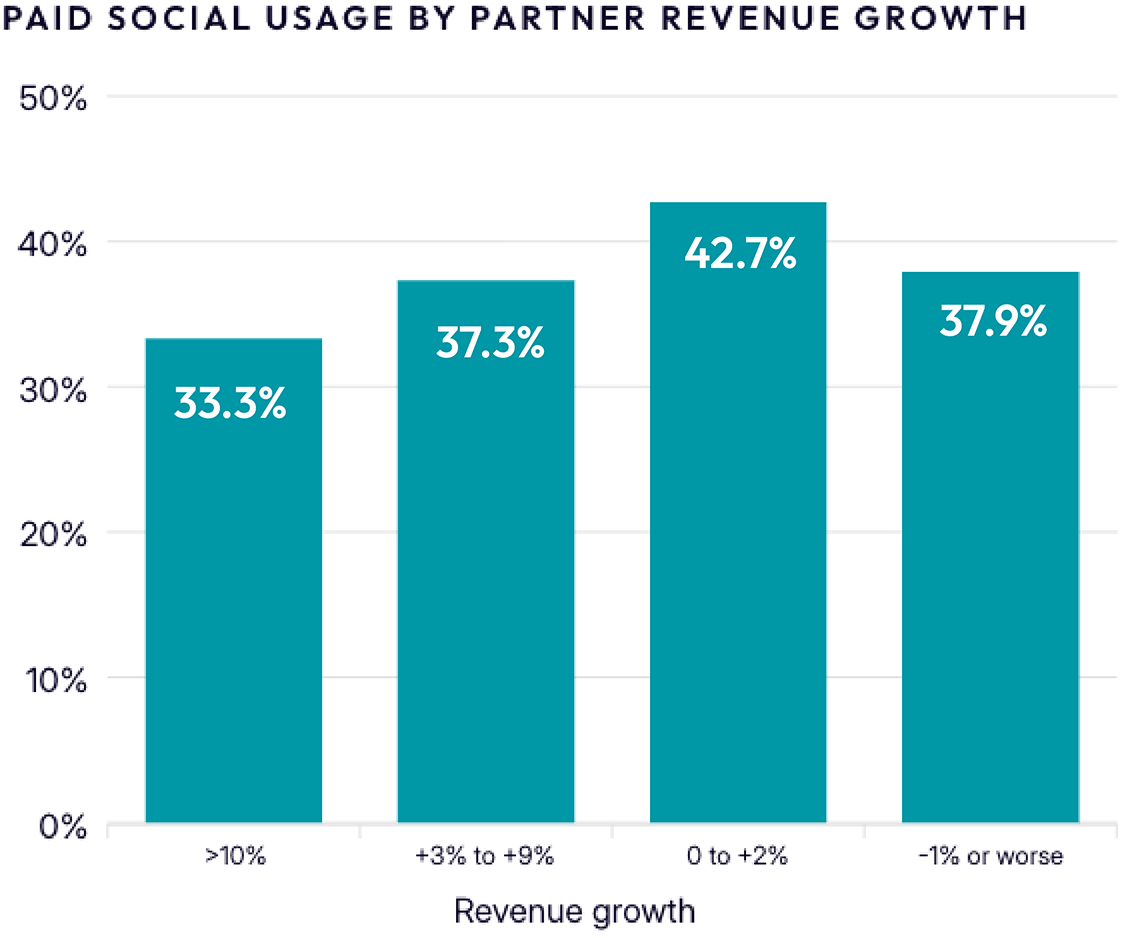
Leverage the best marketing channels for partner success
To see results at the local level, you need to incentivize your affiliates to use the best marketing channels through your partner program.
With purchased leads, referral programs, direct mail, reputation management, and paid search in your affiliates’ corner (plus the combined power of paid and organic social), you can expect to move the needle like never before.
Ansira fuels brand-to-local marketing for 300 brands, enabling them to maximize their reach by empowering their local partners to drive results at the hyper-local level.
Reach out to our marketing experts to learn more about our ecosystem of solutions.
